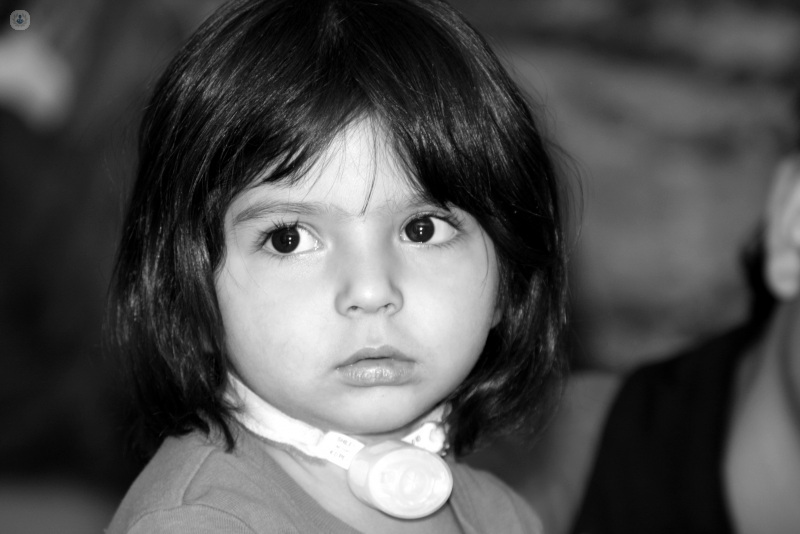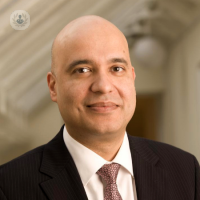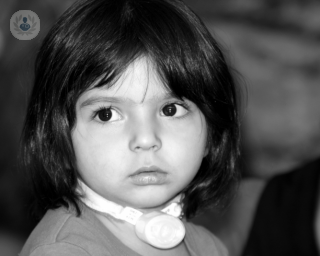Tracheostomy
Professor Guri Sandhu - Otolaryngology / ENT
Created on: 11-13-2012
Updated on: 09-26-2023
Edited by: Karolyn Judge
What is a tracheostomy?
A tracheostomy involves opening up the trachea, or windpipe, through a surgically made hole. A tracheostomy tube or cannula is placed in the opening so the patient can breathe and so that any lung secretions are removed.

Why are they done?
It tends to be done due to obstruction at the oropharynx, larynx, or upper part of the trachea. It is also done when there is:
- Prolonged intubation
- Aspiration of pulmonary secretions
- Permanent swallowing deficit
- Complex head or neck surgeries
There are different types of tracheostomy according to the cause, it may be an emergency tracheostomy or an elective tracheostomy. These can be temporary or permanent.
What does it involve?
A tracheostomy involves making a hole in the trachea to avoid asphyxiation. A 1.5cm wide incision is made in the throat, in front of the trachea, then the trachea is punctured and dilated until a tube can be inserted.
This technique may involve some risks (other than those involved with surgery and anaesthesia) such as damage to the thyroid, trachea erosion, puncture of the lung, and scarring of the trachea that causes pain and difficulty breathing.
How to prepare for it
This procedure is normally performed under general anaesthetic, unless the tracheostomy is performed as an emergency, in which case there may not be time. When performed as an emergency, local anaesthetic is used so that the patient does not feel pain, while when it has been planned, the patient will be given a general anaesthetic.
What's involved in post-operative care?
A person with a tracheostomy is advised to take extra care to keep the area clean, and be ready to know how to deal with a partial or total blockage of the cannula. It is recommended that exposure to aerosols or airborne particles be avoided, to prevent them entering the respiratory tract.
In temporary tracheostomies, the cannula is removed, but if it is permanent, the hole will remain open.





